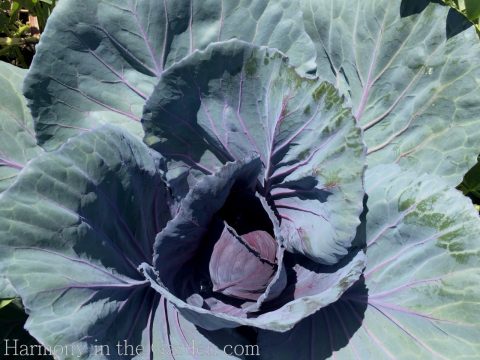
I bet many of you are thinking ‘what the heck is glaucous, anyway?’
Well, according to Webster, glaucous means:
1. of a pale yellow-green color, or of a light bluish-gray or bluish-white color
2. having a powdery or waxy coating that gives a frosted appearance and tends to rub off
And here’s a fun-fact from Wikipedia: the first recorded use of glaucous as the name of a color was in the year 1671.
So, while this word has been around for hundreds of years, it still eludes many gardeners.
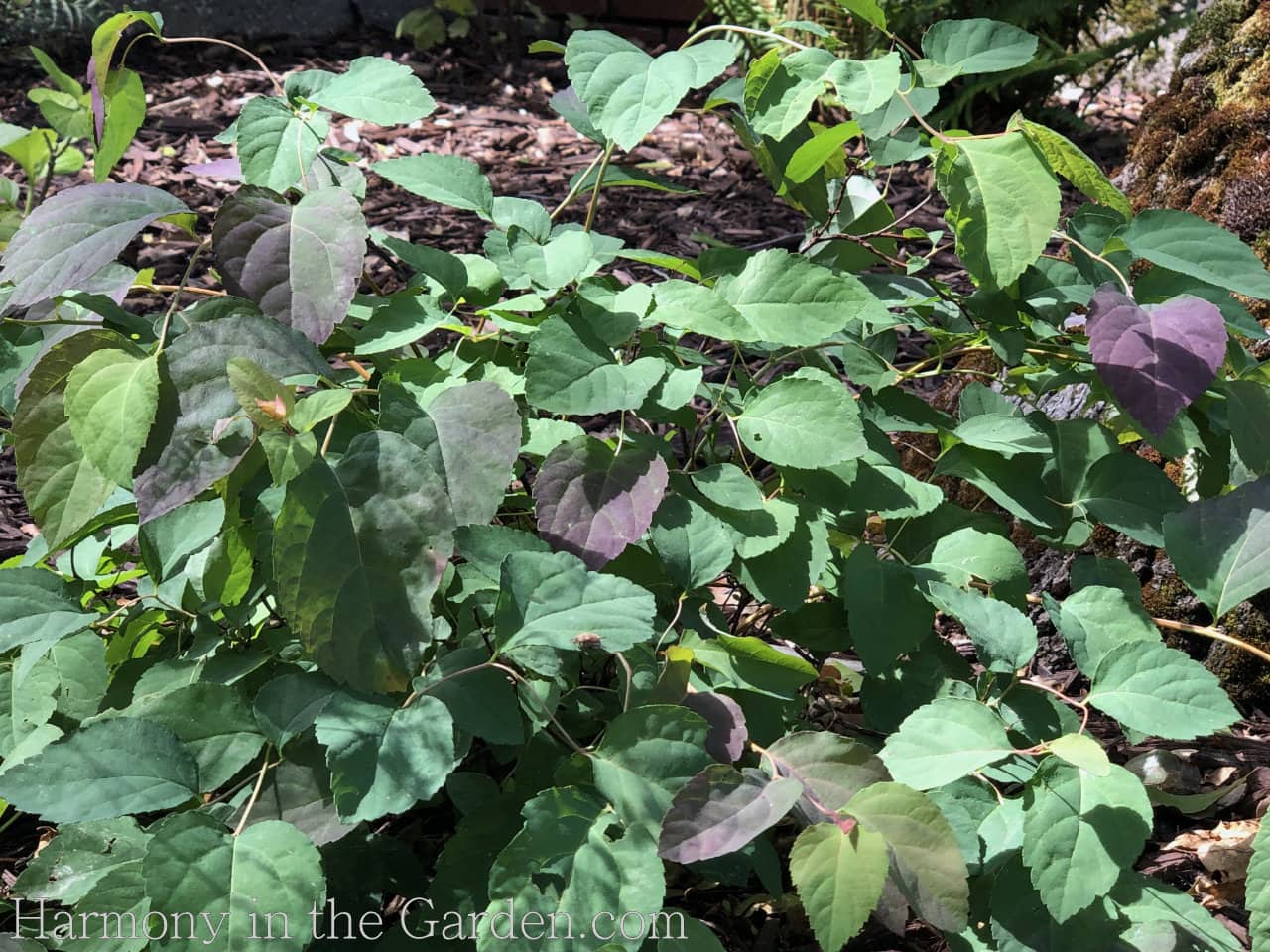
I wonder if it’s partly because it’s such an unattractive sounding word (sounding like something stuck in the throat.)
Or maybe it’s because the definitions are a little all over the place: is it pale yellow-green? Or light bluish-gray? Or, bluish-white? Frosty? Powdery? Hmmm…
Whatever the reason, one of my favorite color combos of all time is glaucous and purple/maroon/burgundy, all nestled together.
There are a few reasons why this combination works so well.
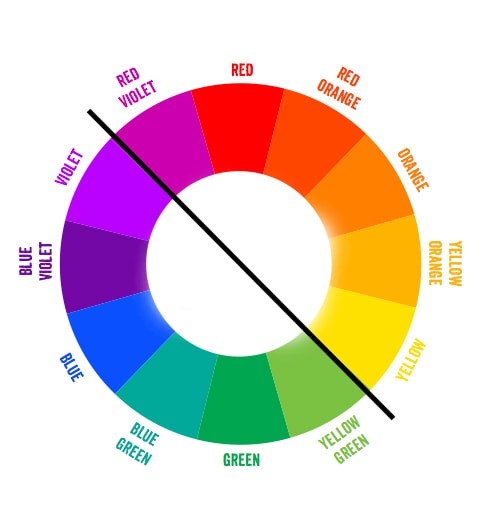
One reason is that all of those subtle colors contained in a glaucous leaf makes for some pretty cool combo-opportunities when combined with purple. Temperature cool, as well as visually cool.
Take a look at the color wheel, and you’ll notice there’s a line drawn down the middle that separates the cooler and warmer colors.
Notice that all the colors in this glaucous-purple combo just so happen to land on the ‘cooler’ side of the wheel: violet thru yellow-green.
In contrast, the other side of the wheel has warmer colors: red, orange, and yellow (Click here for some examples of warming up the garden).
Another reason why this glaucous-purple combo is so lovely to look at is that they’re analogous to one another.
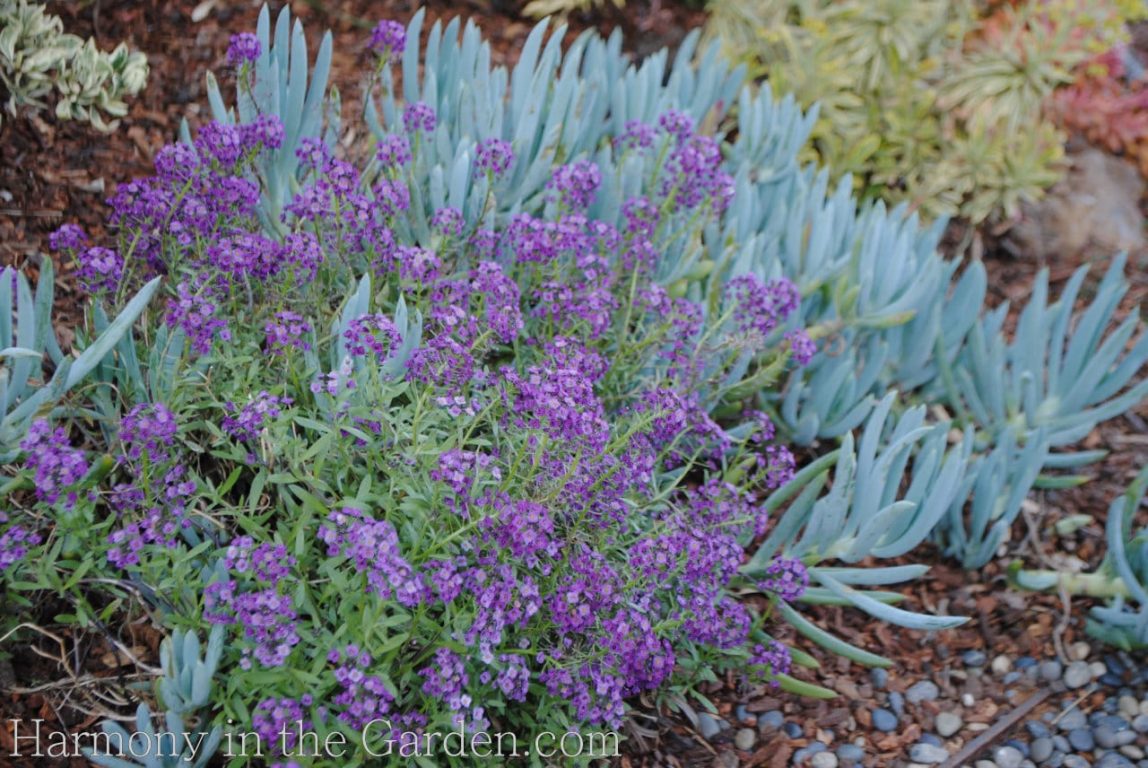
What’s analogous mean?
Simply put, it means if you choose colors that are next to one another on the color wheel (usually in groups of three to six) the effect will be calming and pleasing to the eye.
That’s because analogous colors have components of each within them, therefore allowing the combination to blend seamlessly with one another.
Take a look at the color wheel again, and you’ll see that the yellow-green/bluish-gray glaucous colors are neighbors with maroon/burgundy/purple. The result is a cooling, refreshing, pleasing, harmonious combination.
And, thanks to the glaucous foliage (with its blue, green, and gray undertones) these combinations tend to be a little out-of-the-ordinary, adding that much-needed ‘oomph’ to your garden bed.
Here are a few of my favorite examples that include foliage, edibles, succulents, and flowers, too!
Matilija Poppies (romneya coulteri)
I don’t know which I love more, the color of that foliage or the giant, fried-egg flower?
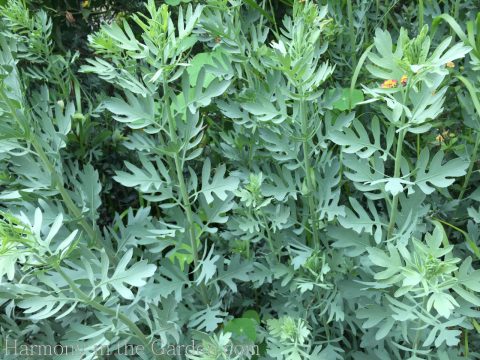
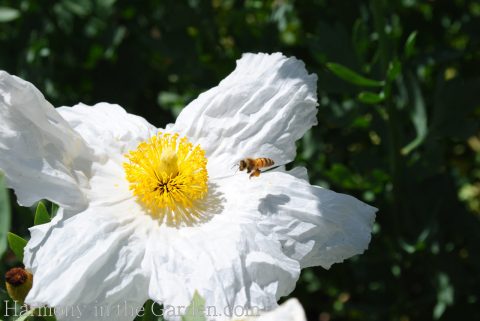
Honeywort (cerinthe major purpurascens “Blue Honeywort”)
I grow these from seed every spring (thanks to Annie’s Annuals) and am always rewarded with freebie-seedlings that surprise me again in the fall.

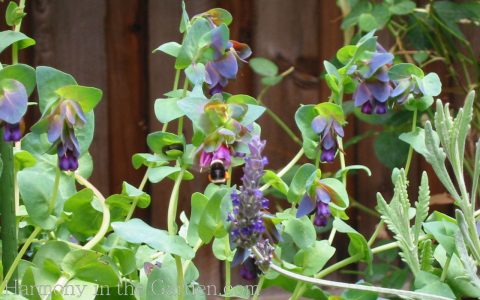
St. John’s Wort ‘Sunburst’ (hypericum ‘Sunburst’)
My favorite St. John’s Wort variety, not only because of its fabulous blue-green foliage (that helps those yellow flowers to really POP) but because it’s also rabbit and deer-resistant.


Red-Leaf Rose (rosa glauca)
While I do see tinges of red in the leaves, I’d rather call this the Blue-Leaf Rose for the glaucous shades that are also there. Either way, it’s a most unusual rose to add to the garden. This beauty would look fantastic planted against a dark green shrub, like the viburnum below. To read more about this unique variety, click here.
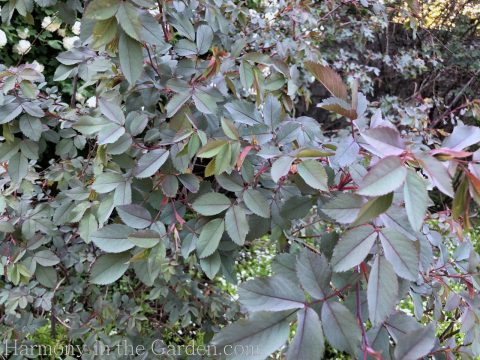
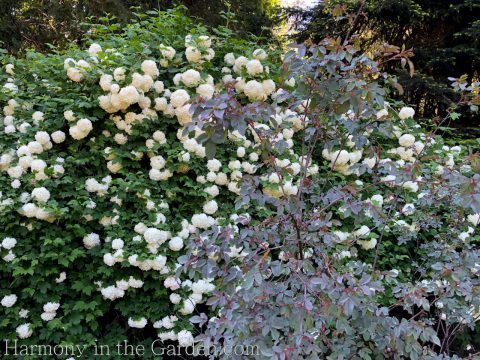
Acacia baileyana 'Purpurea' (Fernleaf Acacia)
An acacia like none other, just look at the purple and glaucous tints on the feathery, new foliage! This mid-sized shrub/small tree grows to about 20′ x 20′, in zones 9-11. Every time I walk by this shrub I’m in awe. No wonder it received the Royal Horticultural Society’s Award of Garden Merit in 1993!
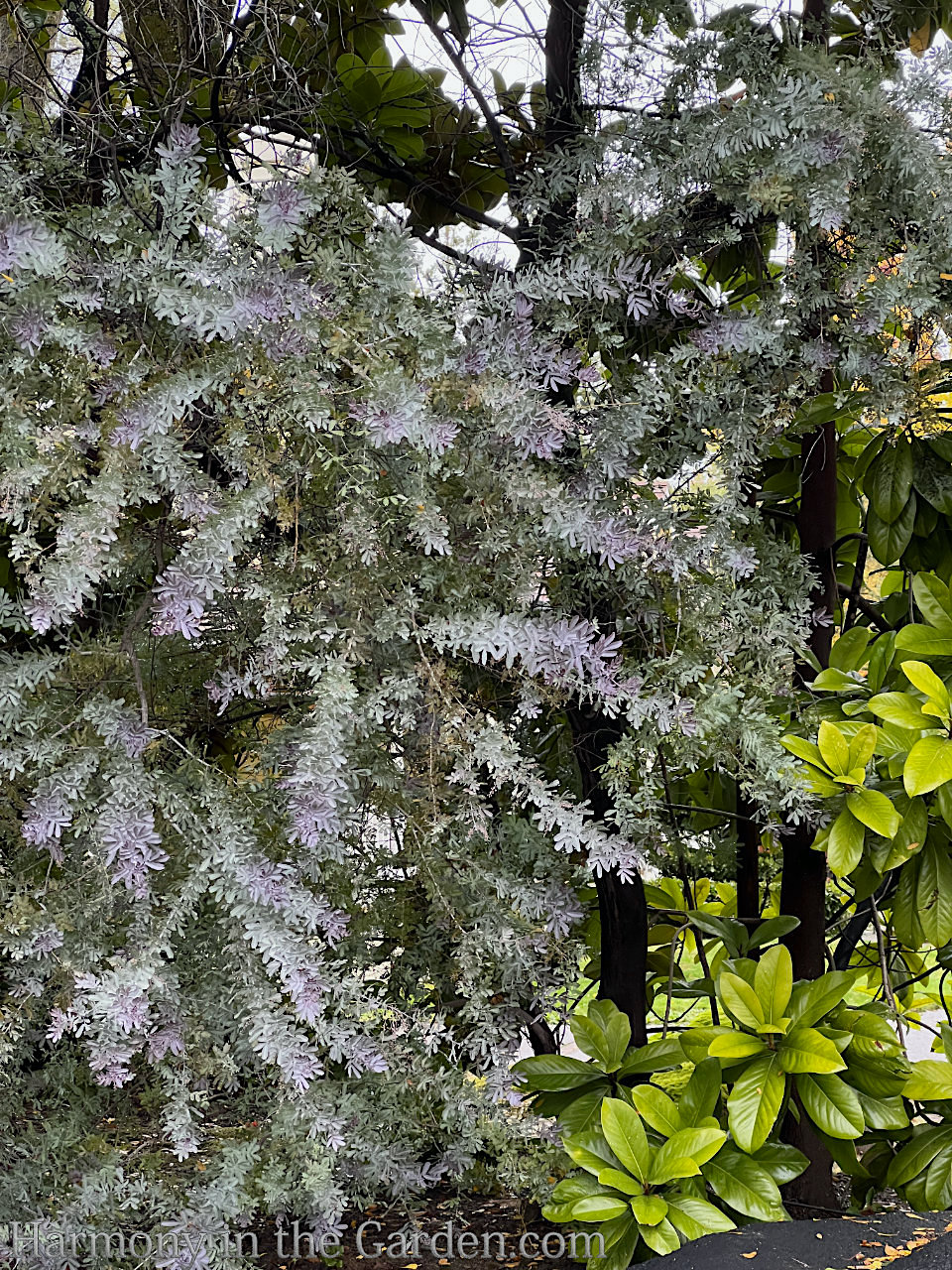

Acacia cultriformis (Knife-Leaf Wattle)
Oh, how I love my Knife-Leaf Acacia. It’s gorgeous glaucous foliage may look like it’s razor sharp, but don’t worry – it isn’t! It’s a fast growing shrub to 10-12′ x 10-12′, evergreen, very low-water, and is covered with fuzzy golden balls in the spring that bees adore. They can be hard to find in my area, but I was lucky enough to find one for sale at the Ruth Bancroft Garden.

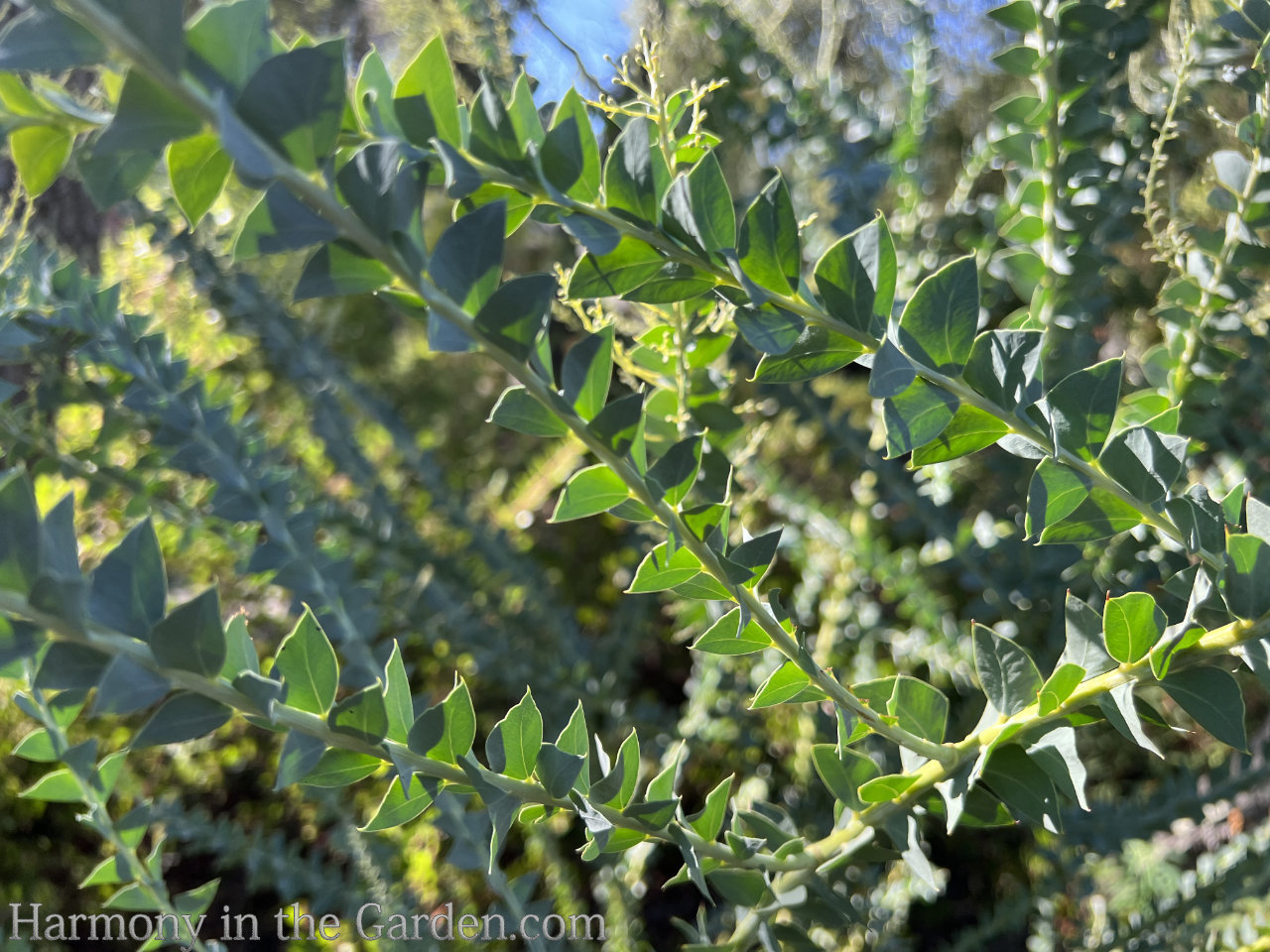
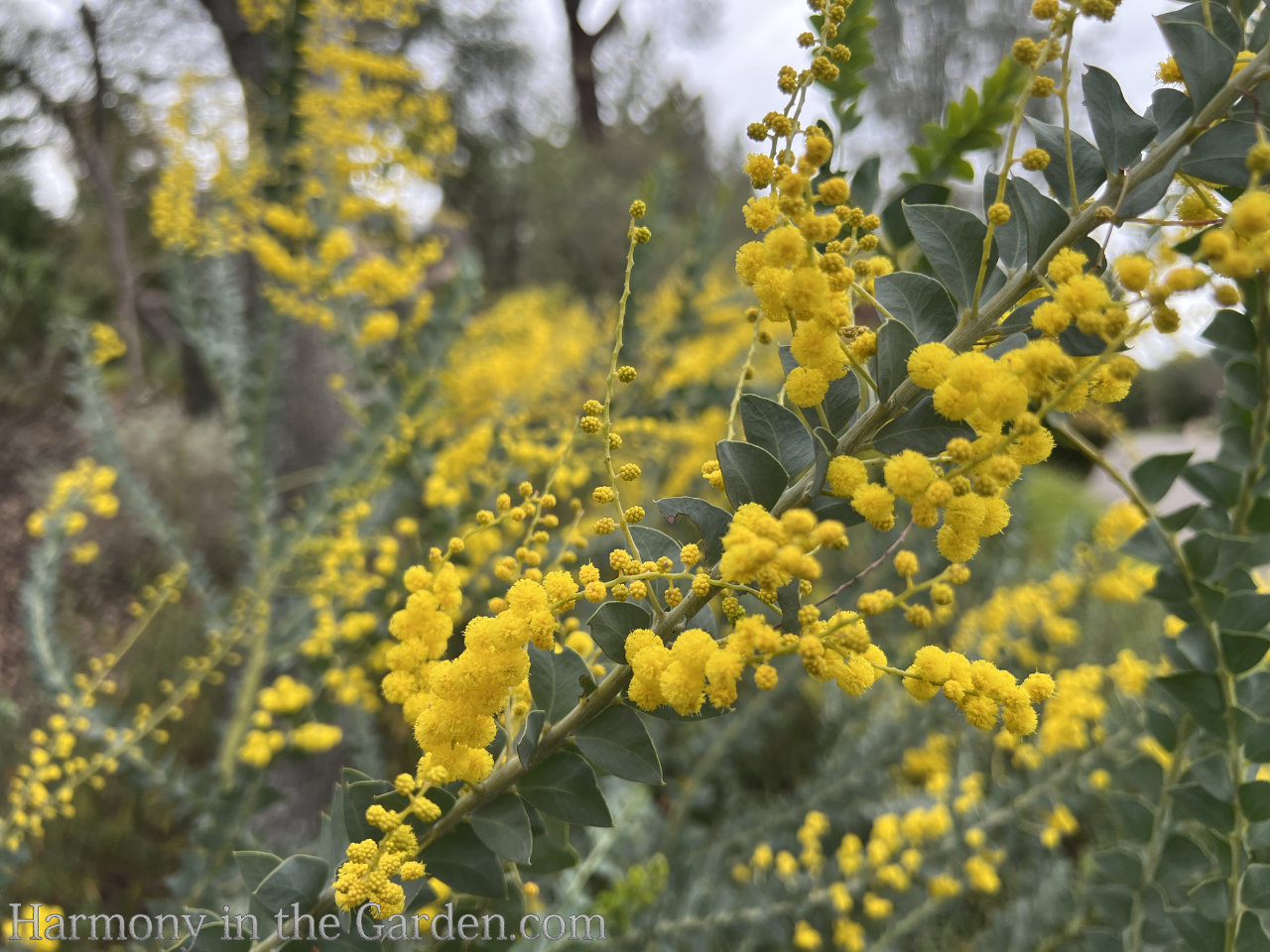
Hibiscus ‘Perfect Storm’
Don’t even get me started on why I love this plant so much. It’s a hardy (as in HARDY!) hibiscus, way more resistant to drought than the tag indicates, gorgeous leaves that change color throughout the seasons, lime green flower-pods, and the biggest, most amazing flowers you’ve ever seen. Don’t believe me? Click here and scroll down to see proof!)
The blue-greens in the foliage are especially stunning with the neighboring purple Stoke’s Aster (left) or the blue Monch’s aster flowers (right.)
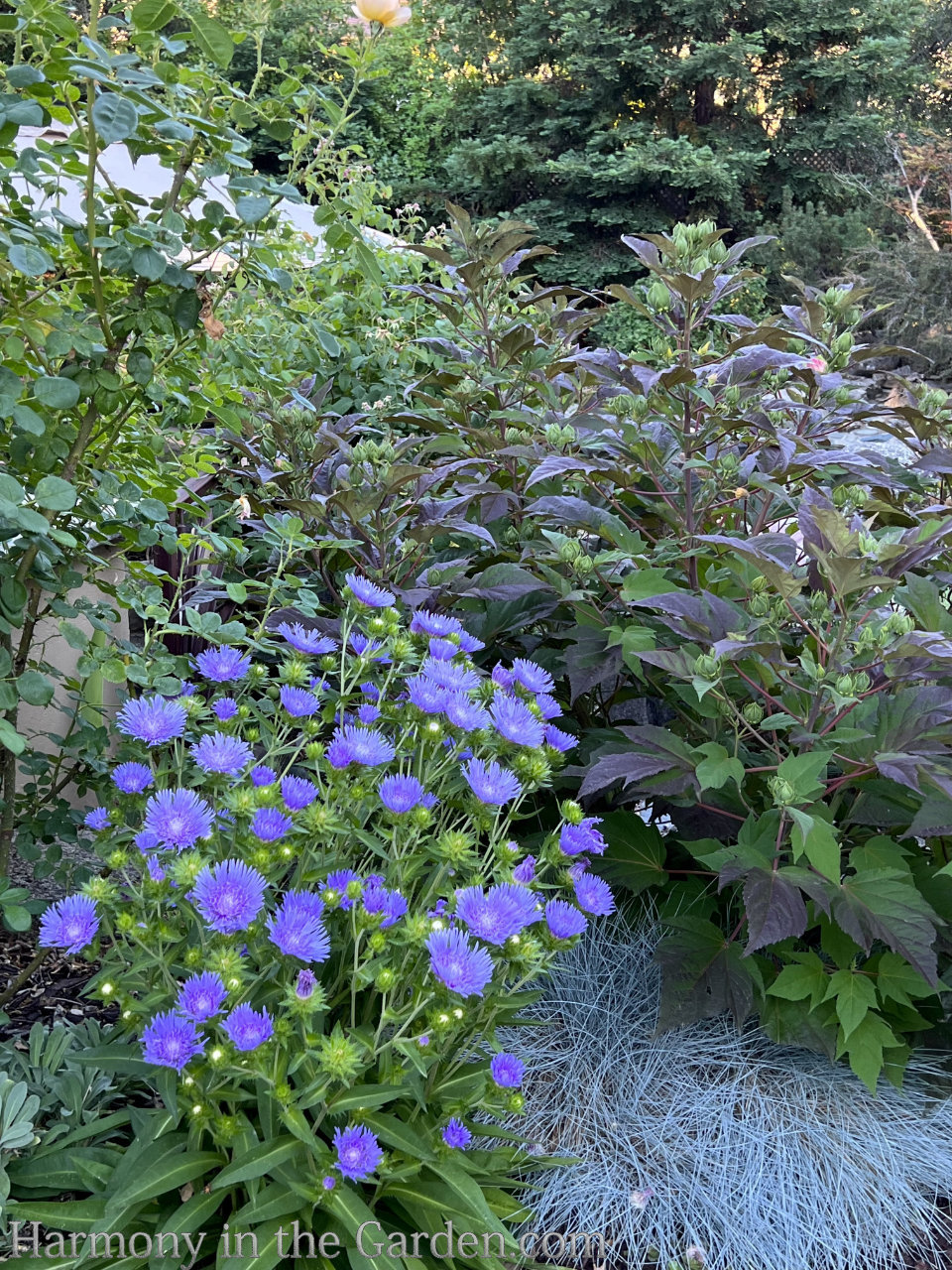

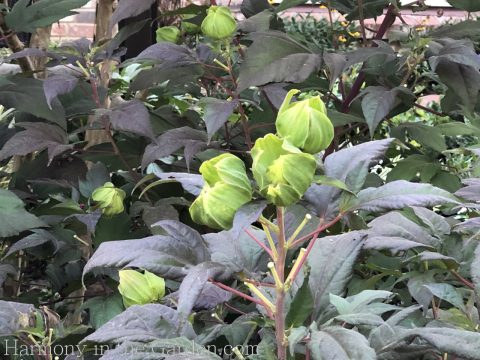
Fringe Flower (loropetalum chinense var. rubrum ‘Razzleberri’)
There’s a ton of loropetalum varieties out there, but the tried-and-true ‘Razzleberri’ tends to be the most reliable for me, as well as having those desirable glaucous colors in certain months of the year. Whenever possible, I like to place something steely blue nearby, like the ‘Globosa’ spruce and ‘Elija Blue’ fescue, below.
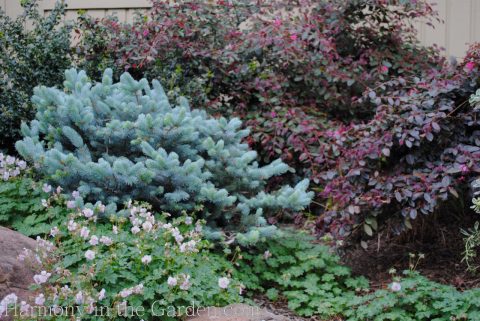
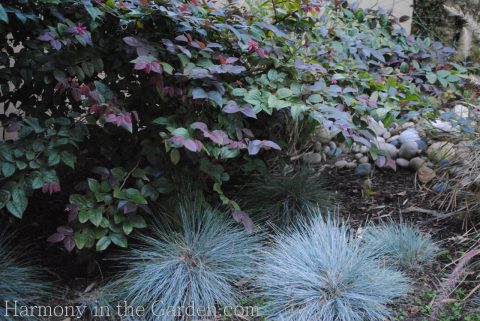
Gopher Spurge (euphorbia characias sub. wulfenii)
I love euphorbias for so many reasons (click here to see why!), but the blue-green foliage of e. wulfenii is one of my favorites. It can re-seed when happy, so make sure to remove the dead flowers to prevent that from happening. Or not – depending on how much you love them, too! In the second photo, you can see how great it looks when paired with the blue-purple colors of the purple sage (salvia purpurea).
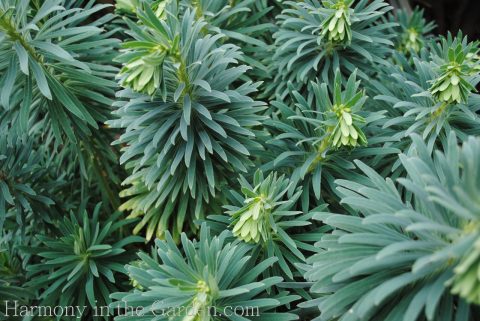
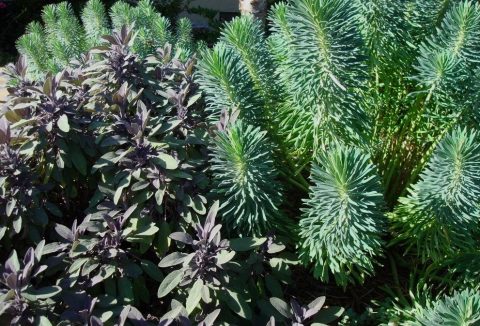
Blue Rye Grass (leymus arenarius ‘Glaucus’) & Honeybush (melianthus ‘Antonow’s Blue)

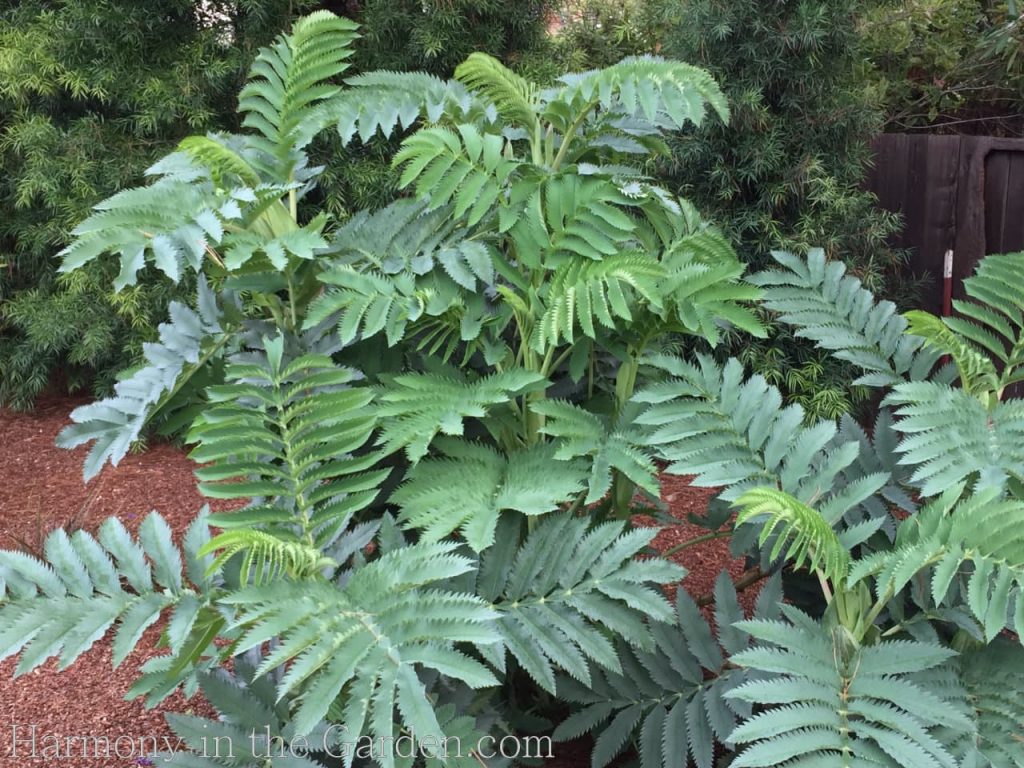
Succulents
Succulents seem to epitomize just how gorgeous a glaucous leaf can be. There are way too many varieties to list, but some of my favorites are below: graptopetalum, beschorneria, echeveria imbricata, and agave parryi.
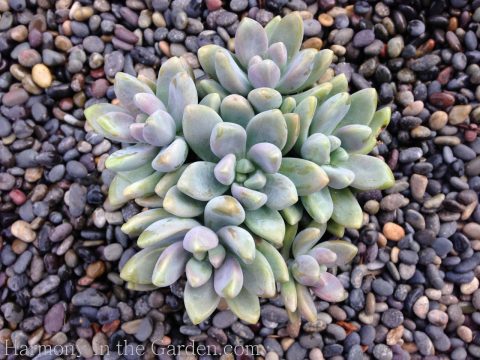
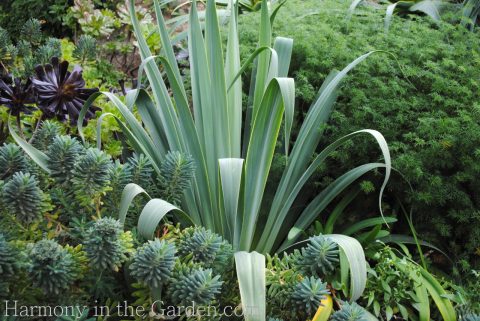
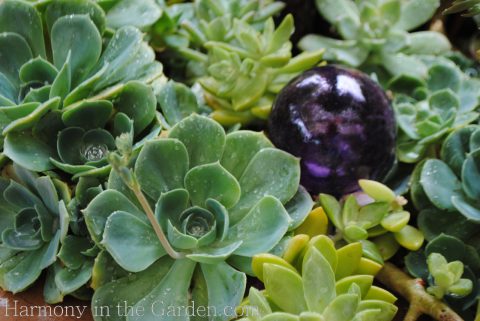
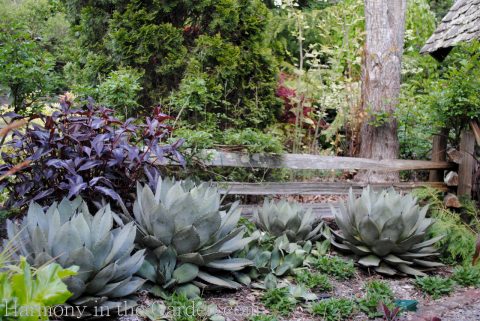
Dianthus
Dianthus is an old-fashioned favorite that’s having a moment (thank heavens – I LOVE dianthus.) They’re not only drought tolerant, but their year-round glaucous foliage adds a lovely color contrast in the garden. Below, is ‘Pinball Wizard’ with its oversized, light & dark pink blooms that smell like heaven.
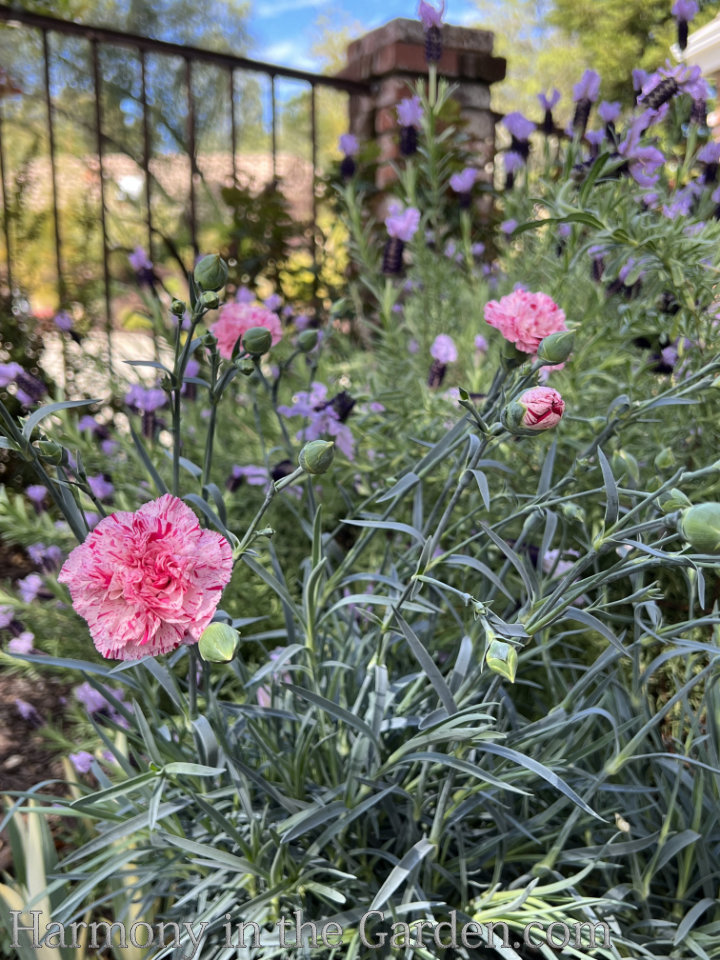

Hostas
Of course, I have to include hostas as having the quintessential glaucous foliage. Just like the succulents above, there are too many varieties to list here, but below are a few of my favorites: ‘Hadspen Blue,’ ‘Great Expectations’ and ‘Mouse Ears.’
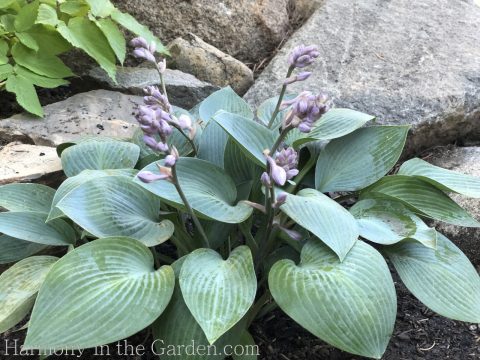

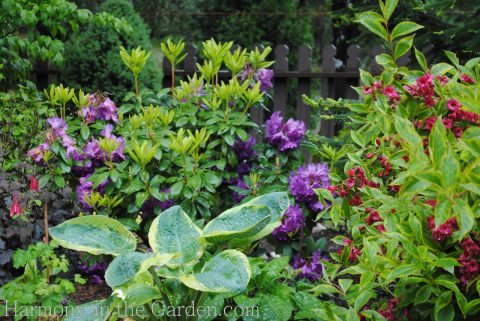
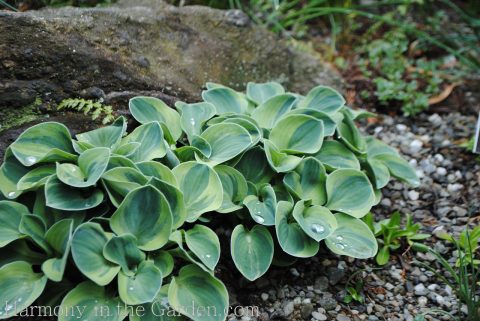
Edibles
A trip to Freeland and Sabrina Tanner’s always-fabulous garden perfectly demonstrates that edibles, too, can provide amazing glaucous colors in the garden. Examples here are Tuscan Kale, cabbage varieties, blueberries, and artichokes.

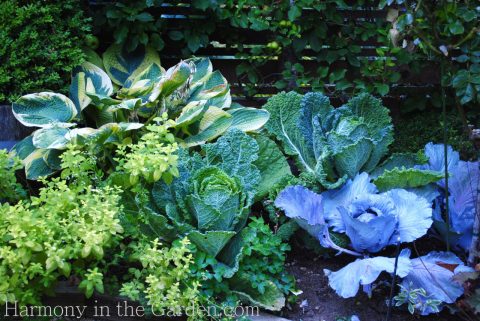
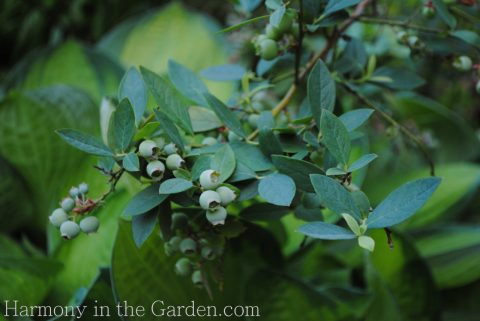
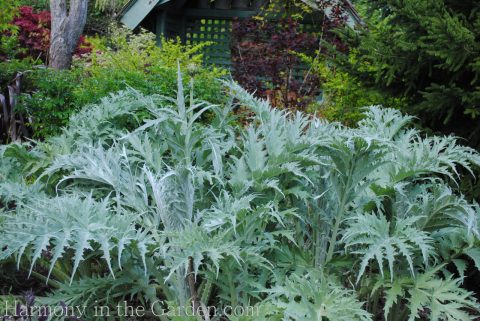
Phew! I realize I’ve left off a million more glaucous plants, but there’s only so much time in a day.
What are some of your favorites?
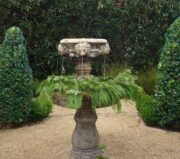
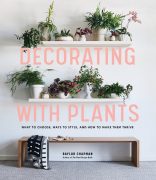




14 Comments
Hi Rebecca,
What is the name of the low growing, maroon/burgundy/purple plant next to the Senicio in the picture under the title “What’s Analogous mean”? It is on the page titled, “Glaucous & Purple.
When I see you on my computer, my whole world stops until I finish reading your blog.
Thanks,
Hi Judy, thanks so much for such a sweet thing to say about my blog! The little purple flower is a common sweet alyssum, nothing fancy but boy are they cute! Especially when next to that beautiful blue senecio.
Rebecca,
I have always liked this plant color combination and now I know a new
Word. Wonderful post. Thank you.
You’re quite welcome, Kathleen – I’m glad you enjoyed the post, too! 🙂
What beautiful and inspirational photos! I will have to search out that hibiscus…I think I like the lime green pods even more than the flowers.
Hi Maggie – Personally, I’m never a huge pink flower fan, but dang those are some mighty beautiful flowers combined with the green pods and maroon foliage. It’s a Proven Winners plant and I used to only be able to get them from their website but this year I’ve seen them available at our local nurseries so I hope you can find one!
I love that the rose is named Rosa glauca — maybe one of the earliest uses?
Hi Mary – yes, glauca is definitely an appropriate name for the rose, isn’t it!
Hello Rebecca,
Thank you so much for including our garden in your post!
Miss you and Tom lots.
Take care,
Sabrina
You are most welcome, Sabrina, and thank YOU for creating such a masterpiece. We miss you guys, too! xoxo
I like so many of these and did not know of the name Honeywort for the Cerinthe. Thanks for so many beautiful examples.
Thanks so much, Barbara. Yes, those ‘worts’ pop up all the time, don’t they? Honeywort, soapwort, lungwort – seems like they’re everywhere! I googled it and found this list – pretty amazing just how old the word is, and how many ‘worts’ there actually are! https://en.wikipedia.org/wiki/List_of_wort_plants
Good heavens, that’s a very long list! Thanks for the link.
Ha! And that’s my edited, pared down list, too! I’ve been collecting photos for this post for a long time – it’s one of my favorite color combos!